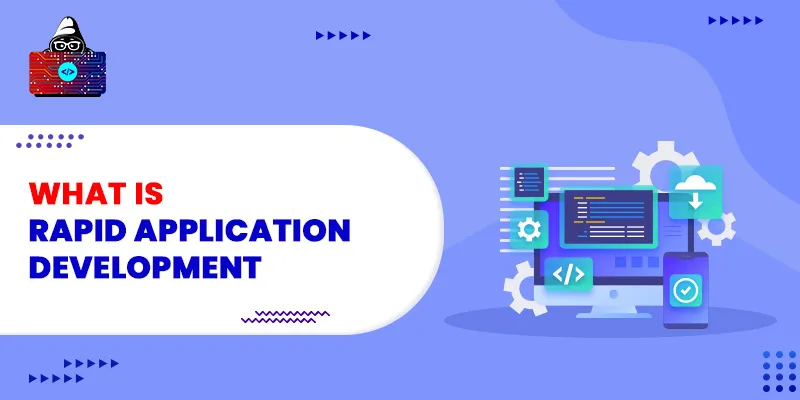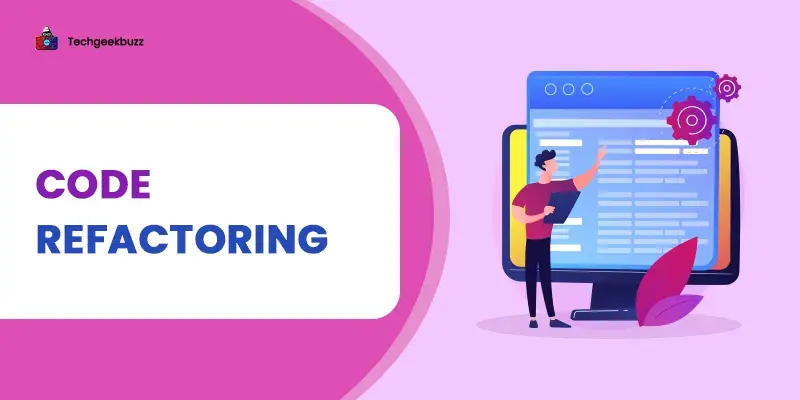Are you a software developer looking for a development model to quickly and efficiently complete projects while meeting customer requirements? Rapid application development is a solution. Continue reading this article to learn more about this development model .
When it comes to software development, agile is among the most common methodologies organizations across the world adopt. It is an iterative and incremental approach to delivering value quickly to customers.
Rather than releasing a product or service to customers in one go at the end, agile emphasizes delivering it in small increments. This makes it possible to introduce any new changes or requirements.
Did you know?
According to Zippia , 71% of the US companies today use Agile to deliver value to their customers quickly.
Agile is a broad term encompassing various other methodologies, and rapid application development is one of them. Rapid Application Development, often abbreviated as RAD, is an SDLC model to develop software applications quickly through continuous iterations and feedback.
Organizations are actively adopting the RAD model as the demand for new software solutions is increasing tremendously. This is backed by the model’s overwhelming market size.
According to Maximize Market Research , the market size of the rapid application development model was valued at $22.76 billion and is expected to reach $193.81 billion by 2027 at a CAGR rate of 42.9%.

Let us explore more about this model in detail below.
What is Rapid Application Development (RAD)?
It is an adaptive software development model aimed at building and delivering high-quality software products efficiently in less time. It focuses more on building prototypes and user feedback than on strict planning.
This means developers create a product’s functional prototype, make modifications based on customer feedback, and deliver it iteratively until it meets all customer requirements. Hence, it combines iterative and prototyping models.
Doing this helps the development teams ensure that the end product is high quality and customer-centric, meaning it is in accordance with customer needs and quality standards.
James Martin developed the rapid application development approach while working at IBM in the 1980s. However, he formalized this approach in 1991 in a book – Rapid Application Development . With this approach, he primarily targeted knowledge-intensive and UI-intensive systems.
The primary advantage of the RAD model is that you can change the design, add new functionality, and update existing features to a functional prototype without having to start everything from scratch in each iteration. This model is primarily suitable for eCommerce and mobile applications.
In a nutshell, this approach emphasizes creating and delivering a software prototype to customers and modifying it based on their feedback rather than following a strict plan.
James Martin RAD Model
James Martin’s RAD model has the following 4 phases:

-
Requirement Planning Phase
It combines the system planning and system analysis phases of the software development life cycle (SDLC) . Managers, IT staff members, and users agree on the business requirements, project scope, available constraints, and system requirements. After the entire team identifies and agrees on the key issues, it is time for the management to grant permission for the team to continue.
-
User Design Phase
As the name suggests, this phase involves communicating with end users to understand their requirements and approving the software’s working model.
As a result, RAD groups and subgroups leverage joint application design (JAD) techniques and CASE tools to translate customer requirements into a working model. These groups continuously interact with end users to create a working model that meets their needs.
-
Construction Phase
This phase is similar to the development phase of SDLC. It involves coding (developing the source code of applications) and testing it. However, the major difference is that, in RAD, users can participate in the development phase. They can still suggest improvements as actual screens or reports are developed.
-
Cutover Phase
This phase generally includes the task of data conversion, testing, the changeover to the new system, and user training. The entire process in the RAD model is compact and compressed compared to a traditional development approach. Ultimately, it builds, delivers, and puts a new system in operation much sooner.
Why Use the Rapid Application Development Model?
The primary reason to use this approach is to quickly and efficiently create high-quality software products that meet end users’ requirements. Also, this model requires little planning, as it primarily focuses on prototypes and continuous user feedback.
End users constantly engage with the development team in the design phase and provide feedback. Hence, the implementation/development of the product occurs rapidly as most issues and blockages are identified and eliminated early in the design phase.
The next significant reason is creating functional prototypes, testing them, and making as many modifications as required does not affect the final product.
As a result, this approach involves reduced risk and ensures the delivery of high-quality software products in a short time.
When to Use the RAD Model?
You can successfully use this model if it is possible to break a project into modules. Modularization is the most important task in this approach to reduce project work time.
Here are some instances when you need to use the rapid application development model:
-
When You Need to Complete a Project Quickly
If you need to complete a project within a given deadline, which is too tight, RAD comes in handy. This approach helps you deliver projects without compromising their quality in less time. Compared to traditional ones that involve lengthy requirements planning and design phases, RAD is a compact and compressed approach. Hence, opting for it helps deliver your project within tight deadlines.
-
When You Have Enough Budget
Developing software products using the RAD approach requires skilled staff, which demands more salaries. Hence, you can use this model to develop and deploy your project only if you have enough budget.
-
When You Can Test Prototypes Reliably
It is essential to have a pool of users who can test your prototypes and provide essential feedback. As users provide feedback, the development team modifies the previous prototype and releases it in the next iteration with the required changes.
Advantages and Disadvantages of the RAD Model
Advantages
- The model can accommodate changes in the requirements at any time.
- It increases the reusability of components.
- It emphasizes customer needs and encourages their feedback.
- The reduced development time ensures the quick delivery of products.
- The RAD model gives higher productivity with fewer people in a short time.
- Progress is easy to measure in each phase of the RAD model.
- A working product is ready in the early stages of development.
- The time between prototypes and iterations is short.
- End users quickly provide their feedback and reviews.
- The model minimizes risks and the chances of failure as the functional prototype undergoes continuous testing and modifications.
- As features and functionality are integrated right from the project's inception, this model has fewer integration issues.
Disadvantages
- You can use the RAD model to develop a software system only if it can be modularized.
- It requires highly skilled developers and designers.
- Management is an integral part. Therefore, management complexity is more than in other software development models.
- User involvement is a must throughout the life cycle.
- Strong or skilled team members are necessary to identify the user's business requirements.
- The cost of modeling and automated code generation is very high. Therefore, using this approach is impractical for projects with budget constraints.
- It is ideal for systems that are scalable and component-based.
RAD vs Waterfall and Agile
The major difference between RAD and other development methodologies is speed. Let us compare RAD with two other popular methodologies – Agile and Waterfall .
|
Rapid Application Development |
Waterfall |
Agile |
|
Creates a product’s functional prototype and makes it available for end users to seek feedback. |
Involves intensive planning and takes a sequential approach to software development. |
Breaks down a project into small, manageable tasks and accomplish them in increments. |
|
Delivers projects in a short time. |
Requires a lot of time to deliver a fully-functional product. |
Delivers a project in milestones called ‘sprints’. |
|
Accommodates changing requirements throughout the development. |
Does not allow changes in the requirements once the planning is done. |
Easy to change requirements. |
|
Involves end users and clients throughout the product’s life cycle. |
Involves clients and end users only in the planning phase. |
End users and clients are involved throughout the development process. |
Conclusion
That was all about the rapid application development model, a.k.a. RAD. It is a software development model that ensures the delivery of high-quality software products within a short time frame. Constant customer feedback ensures that the product meets all their specified requirements.
So, you can use RAD when you don't have budget constraints, highly skilled developers are available, and you have a pool of users to test prototypes and provide feedback.
If you have any queries related to this article, feel free to share them in the comments section.
People are also reading:



Leave a Comment on this Post